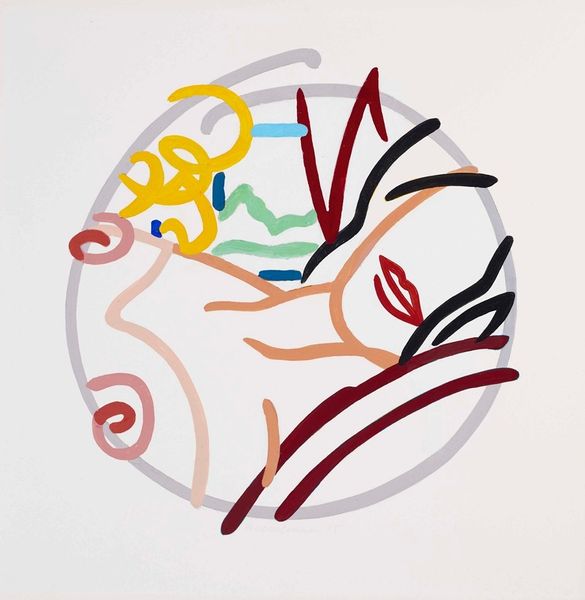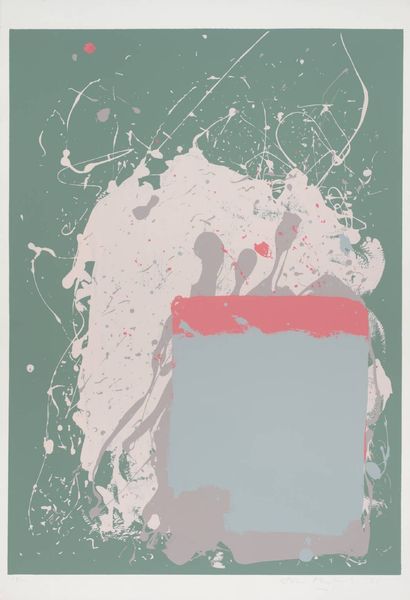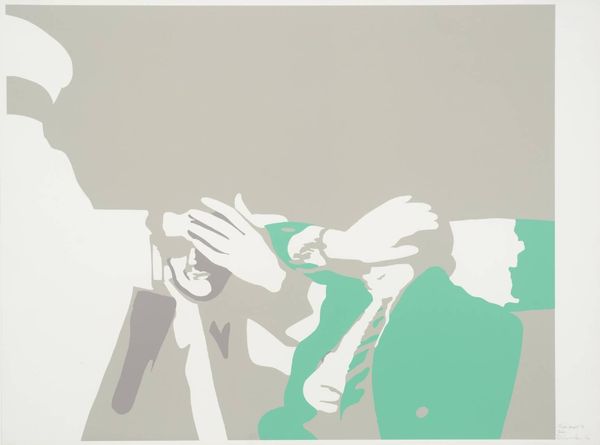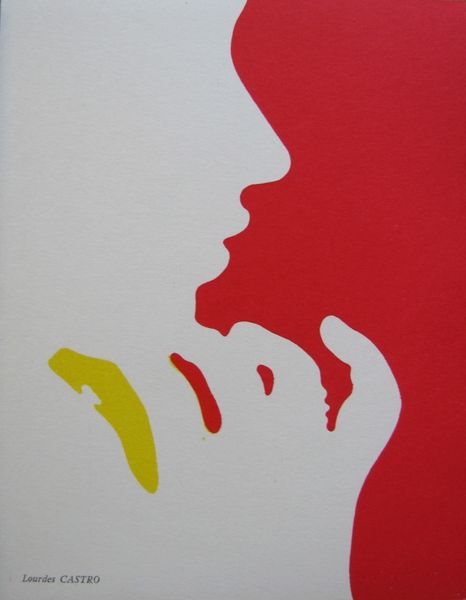
Copyright: Modern Artists: Artvee
Curator: Tom Wesselmann’s "Smoker," created in 1976, jumps out at you immediately. It feels so…stark. Editor: Yes, those intensely flat planes of color are immediately striking. What interests me is the blatant intimacy depicted. The hand, the mouth, the cigarette – all so close, yet devoid of genuine connection, right? Curator: Absolutely. Wesselmann’s technique here feels almost industrial – the smooth, uninterrupted surfaces give it a mass-produced quality, even though it is a painting. I'm also intrigued by its scale; this isn't some easily handled canvas. Editor: Its commentary on female identity feels quite pertinent even now. We’re presented with fragmented elements—the luscious lips, the manicured hand—isolating and commodifying the female form. It evokes that objectification rooted in advertising and Pop culture's relentless imagery. Curator: Well, the materials and their manipulation are intriguing on their own terms. This smooth application really flattens perspective. Think about the process – the layering, masking, decisions behind the selected hues… each plays a role in how we consume this image, much like any other manufactured object. Editor: It is such a powerful piece, challenging the idealized and the eroticized simultaneously, holding up a mirror to the social constructions of desirability. Its echoes of billboard advertising certainly speak to that. Curator: I agree. The artifice is undeniable. Editor: So true. It lingers in the mind long after viewing, prompting questions about societal expectations. Curator: Precisely. Looking at it I just see how deliberately constructed the artifice really is. Editor: Agreed, its resonance continues to reverberate across current dialogues.
Comments
No comments
Be the first to comment and join the conversation on the ultimate creative platform.













